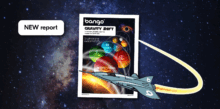Life beyond IDFA: How will app developers adapt to this ‘new normal’?
by Anna Todd

The mobile app community must have breathed a sigh of relief when Apple announced it was delaying the launch of the IDFA privacy updates until early 2021. The proposed change had only been made public in June, giving companies little time to prepare for the huge changes in how they monitor the user journey.
The mobile app community has been concerned about what this means for them – and rightly so.
Currently, when a new user downloads an app, a device identifier is passed on to the app developer. This leads to an understanding of how the user interacts with their app – when they installed it, how much they use it and what they bought. On an Apple device, this happens through IDFA, on Google, via Google AD ID. It’s easy for app developers to improve their ad campaigns because they have the data to tell them what’s working. Knowledge is power.
Apple’s new update signals the demise of IDFA. App users will be asked to explicitly consent to their ID being used. Whether they will do this is up for debate, some estimates are as low as 15%. If the user says no, the app developer won’t be able to track their device or show them relevant ads. They will have no idea how an ad campaign is performing, because they won’t know who’s clicked an ad or who went on to install. This makes it very difficult to retarget users, to segment audiences, and create lookalikes, all of which are reliant on IDFA. In turn, that will affect user acquisition and monetization.
This massive about turn in privacy policy has even the most successful app developers planning new strategies. For example, in Bango’s recent ‘3 Minutes with’ interview, Nexon’s Mr Lee WooChang talked about the importance of UA strategy in relation to these changes: “iOS 14 update’s IDFA issue will bring about colossal changes in UA management during the second half of 2020, but I believe the industry itself and each UA manager together will seek and find an alternative.”
Run a Google search on how to manage these privacy updates and the advice comes in thick and fast. Suggestions range from conditioning new users so they feel comfortable with tracking to app developers triggering the consent ‘pop up’ message once the user has used the app and feels more loyal.
While the app industry debates how to cope with this transformation, Bango Marketplace customers are unfazed. Why?
Over 90% of Bango Audiences are independent of IDFA and are not affected by the changes in iOS 14 and SKAdNetwork.
Most Bango Audiences use hashed MSISDNs supplied by trusted payment partners to create custom and lookalike audiences that are shared using Facebook Business Manager. Adding a Bango Audience to an app marketing campaign remains the best way to focus on users proven to pay, and to help you benefit from the changes ahead, especially around the demise of IDFA. Take a look at how Bango Audiences can help you increase your revenues here
Our top tips for managing the privacy updates:
- Use incentives in the pop-up message to encourage users to consent to tracking
- Add a Bango Audience to your app marketing campaign – and watch your revenues increase.
For more practical advice and tips, tune into our webinar, ‘The end of IDFA = new opportunities for app monetization‘ on Wednesday, 7 October, hosted by Business of Apps. Hear Bango and our panel of UA experts give advice on successful monetization and user acquisition strategies to prepare for the dramatic changes planned for device tracking and consent with the Apple IDFA privacy update.
Subscribe to our newsletter
Get the latest subscription bundling news and insights delivered straight to your inbox.



